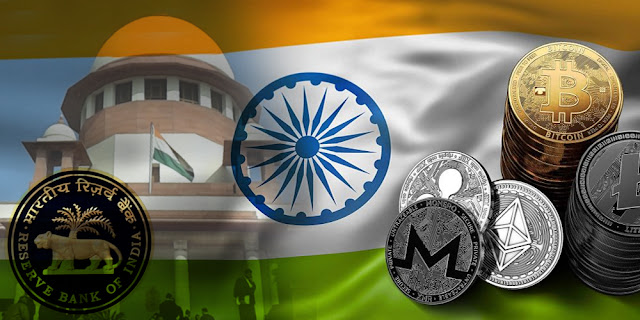Are Stablecoins the Successor of Bitcoin?
The recent price crash of Bitcoin and an enormous amount of volatility in its trading price have given birth to a perception that Bitcoin is not only unstable but also unpredictable. Another drawback of Bitcoin that has drawn the attention of the crypto community is its inconsistent trading prices across cryptocurrency exchanges.
This is precisely where the stablecoins have a pivotal role to play. Stablecoins are cryptocurrencies which aim to hold their value better than others in the crypto space, thus offering more stability to investors.
Stablecoins have a unique characteristic of being redeemable for something else that is of tangible value, e.g; gold or regular fiat currencies such as US dollars.
The underlying asset of stablecoins (i.e; the monetary value that the investors expect it to trade at) is normally deposited with a trusted bank. In case, people are confident about redeeming these coins in exchange for the said currency, and that the issuer has enough reserves for all the coins in circulation, the price of the stablecoin should be at par with the underlying asset value. However, there is no technical formula to hold the price of stablecoin at a fixed value. If the people lose confidence in the coin issuer, it is likely that there would be significant variation in the price. Furthermore, demand outstripping supply of the stablecoin would result in a price hike.
Some widely used stablecoins are TrueUSD, Tether, USD Coin, which peg their value to the US dollar. To date, TrueUSD has held stable, whereas Tether depicted short-term volatility, fluctuating in the range of $0.989 to $0.95, and USD Coin depicted slight instability with its most significant drop of within 1.8% of the dollar. Nonetheless, stablecoins have remained relatively stable as compared to cryptocurrencies.
In recent times, stablecoins have gained popularity as the very idea of a cryptocurrency with a nearly fixed value attracts the investors who intend to make purchases with cryptocurrencies. Due to the regulatory issues, the transactions between cryptocurrencies and fiat currencies are not allowed on several exchanges; the stablecoins have emerged as a solution by presenting itself as a viable option to buy on these exchanges.
Computer algorithms have started controlling the price of stablecoins. They do so by buying and selling it automatically on the basis of real-time prices, thus keeping the price of the coins stable. Therefore, stablecoins might provide a solution to temporary volatility but its stability depends upon the currency backing it. When the currency backing its value remains stable in worth, the stablecoin remains stable as well.
Changpeng Zhao, the CEO of Binance says, “We understand that the concept of volatility in cryptocurrencies always remains a concern, therefore, we actively promote stablecoins such as TrueUSD and others.”
Vishal Gupta, the Founder and CEO of BINEX.TRADE says, “Although stablecoins present themselves as potential alternatives to the regular cryptocurrencies yet it would be too early to label them as the successor of Bitcoin.”
Tyler Winklevoss, the Founder of Gemini says, “Stablecoins like Gemini dollar will act as an important player to solve the trust issues usually associated with stablecoins.”
Despite the volatility, regular cryptocurrencies have fair chances to remain popular with investors as they are unlikely to adopt an alternative as stablecoins and lose the chance to earn millions for security.
This is precisely where the stablecoins have a pivotal role to play. Stablecoins are cryptocurrencies which aim to hold their value better than others in the crypto space, thus offering more stability to investors.
Stablecoins have a unique characteristic of being redeemable for something else that is of tangible value, e.g; gold or regular fiat currencies such as US dollars.
The underlying asset of stablecoins (i.e; the monetary value that the investors expect it to trade at) is normally deposited with a trusted bank. In case, people are confident about redeeming these coins in exchange for the said currency, and that the issuer has enough reserves for all the coins in circulation, the price of the stablecoin should be at par with the underlying asset value. However, there is no technical formula to hold the price of stablecoin at a fixed value. If the people lose confidence in the coin issuer, it is likely that there would be significant variation in the price. Furthermore, demand outstripping supply of the stablecoin would result in a price hike.
Some widely used stablecoins are TrueUSD, Tether, USD Coin, which peg their value to the US dollar. To date, TrueUSD has held stable, whereas Tether depicted short-term volatility, fluctuating in the range of $0.989 to $0.95, and USD Coin depicted slight instability with its most significant drop of within 1.8% of the dollar. Nonetheless, stablecoins have remained relatively stable as compared to cryptocurrencies.
In recent times, stablecoins have gained popularity as the very idea of a cryptocurrency with a nearly fixed value attracts the investors who intend to make purchases with cryptocurrencies. Due to the regulatory issues, the transactions between cryptocurrencies and fiat currencies are not allowed on several exchanges; the stablecoins have emerged as a solution by presenting itself as a viable option to buy on these exchanges.
Computer algorithms have started controlling the price of stablecoins. They do so by buying and selling it automatically on the basis of real-time prices, thus keeping the price of the coins stable. Therefore, stablecoins might provide a solution to temporary volatility but its stability depends upon the currency backing it. When the currency backing its value remains stable in worth, the stablecoin remains stable as well.
Changpeng Zhao, the CEO of Binance says, “We understand that the concept of volatility in cryptocurrencies always remains a concern, therefore, we actively promote stablecoins such as TrueUSD and others.”
Vishal Gupta, the Founder and CEO of BINEX.TRADE says, “Although stablecoins present themselves as potential alternatives to the regular cryptocurrencies yet it would be too early to label them as the successor of Bitcoin.”
Tyler Winklevoss, the Founder of Gemini says, “Stablecoins like Gemini dollar will act as an important player to solve the trust issues usually associated with stablecoins.”
Despite the volatility, regular cryptocurrencies have fair chances to remain popular with investors as they are unlikely to adopt an alternative as stablecoins and lose the chance to earn millions for security.



Comments
Post a Comment